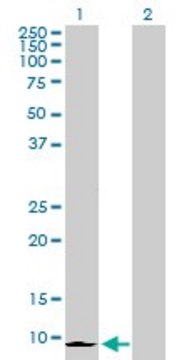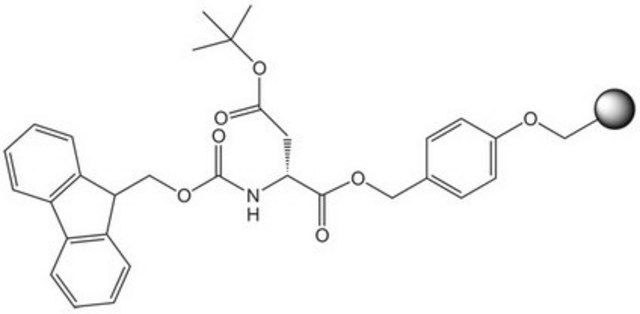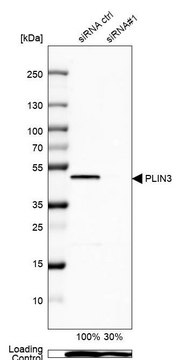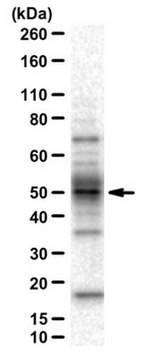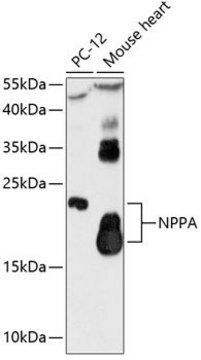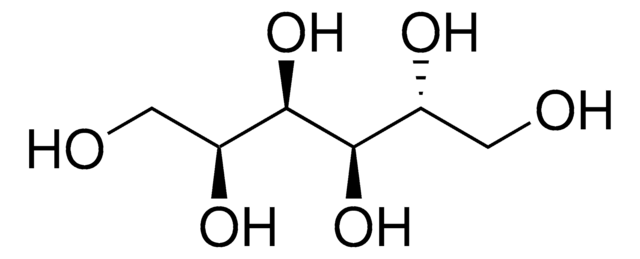AV07037
Anti-CXCL3 antibody produced in rabbit
IgG fraction of antiserum
Sign Into View Organizational & Contract Pricing
All Photos(1)
Synonym(s):
Anti-CINC-2b, Anti-GRO3, Anti-GROg, Anti-MIP-2b, Anti-MIP2B, Anti-SCYB3
UNSPSC Code:
12352203
NACRES:
NA.41
Recommended Products
biological source
rabbit
Quality Level
conjugate
unconjugated
antibody form
IgG fraction of antiserum
antibody product type
primary antibodies
clone
polyclonal
form
buffered aqueous solution
mol wt
11 kDa
species reactivity
human
concentration
0.5 mg - 1 mg/mL
technique(s)
western blot: suitable
NCBI accession no.
UniProt accession no.
shipped in
wet ice
storage temp.
−20°C
target post-translational modification
unmodified
Gene Information
human ... CXCL3(2921)
Immunogen
Synthetic peptide directed towards the middle region of human CXCL3
Application
Anti-CXCL3 antibody produced in rabbit is suitable for western blotting at a concentration of 1 μg/ml.
Biochem/physiol Actions
CXCL3 is a chemokine that binds to CXCR1 and CXCR2 receptors and stimulates p38 and ERK1/2-dependent migration of asthmatic airway smooth muscle cells. Prostate stromal cells secrete CXCL3 in response to IL-1 that results in prostatic inflammation in early stages of prostate cancer formation.
Target description
CXCL3 is a chemokine that affects migration and adhesion of monocytes. CXCR2 is its known receptor.
Sequence
Synthetic peptide located within the following region: QSVNVRSPGPHCAQTEVIATLKNGKKACLNPASPMVQKIIEKILNKGSTN
Physical form
Purified antibody supplied in 1x PBS buffer with 0.09% (w/v) sodium azide and 2% sucrose.
Disclaimer
Unless otherwise stated in our catalog or other company documentation accompanying the product(s), our products are intended for research use only and are not to be used for any other purpose, which includes but is not limited to, unauthorized commercial uses, in vitro diagnostic uses, ex vivo or in vivo therapeutic uses or any type of consumption or application to humans or animals.
WGK
WGK 3
Flash Point(F)
Not applicable
Flash Point(C)
Not applicable
Regulatory Information
常规特殊物品
Certificates of Analysis (COA)
Search for Certificates of Analysis (COA) by entering the products Lot/Batch Number. Lot and Batch Numbers can be found on a product’s label following the words ‘Lot’ or ‘Batch’.
Already Own This Product?
Find documentation for the products that you have recently purchased in the Document Library.
Qianru He et al.
Frontiers in neuroscience, 12, 1016-1016 (2019-01-29)
Fibroblasts (Fbs) effectively promote Schwann cells (SCs) migration, proliferation, and neurite regeneration. Whether Fbs express different motor and sensory phenotypes that regulate the cell behavior and peripheral nerve function has not been elucidated. The present study utilized the whole rat
Laila A Al-Alwan et al.
Journal of immunology (Baltimore, Md. : 1950), 191(5), 2731-2741 (2013-08-02)
Structural cell migration plays a central role in the pathophysiology of several diseases, including asthma. Previously, we established that IL-17-induced (CXCL1, CXCL2, and CXCL3) production promoted airway smooth muscle cell (ASMC) migration, and consequently we sought to investigate the molecular
Ira Kogan-Sakin et al.
Carcinogenesis, 30(4), 698-705 (2009-02-24)
It is well accepted that tumor microenvironment is essential for tumor cells survival, cancer progression and metastasis. However, the mechanisms by which tumor cells interact with their surrounding at early stages of cancer development are largely unidentified. The aim of
Our team of scientists has experience in all areas of research including Life Science, Material Science, Chemical Synthesis, Chromatography, Analytical and many others.
Contact Technical Service

